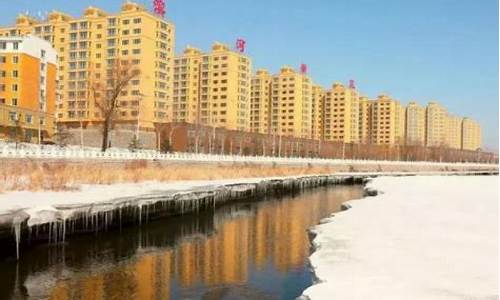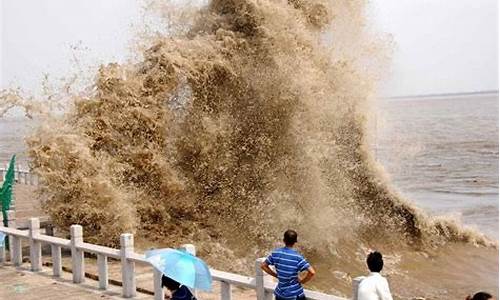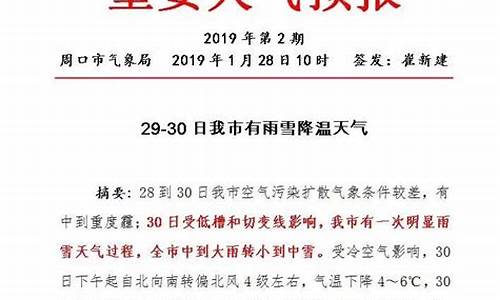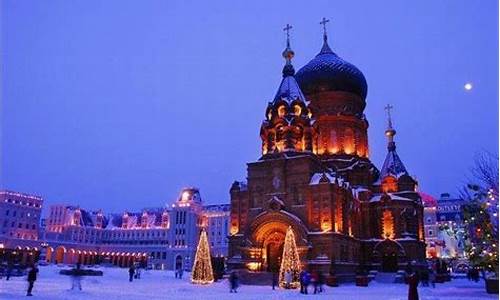摩洛哥简介
大家好,今天我将为大家介绍一下关于摩洛哥简介的问题。为了更好地理解这个问题,我对相关资料进行了归纳整理,现在让我们一起来看看吧。
1.蒙特卡洛在哪个国家
2.西班牙与摩洛哥的历史关系
3.2022世界杯摩洛哥战绩
4.摩洛哥的首都
5.摩洛哥为什么要叫摩洛哥啊?
6.摩洛哥的英文简介是什么?

蒙特卡洛在哪个国家
1、蒙特卡洛是属于摩纳哥公国(摩洛哥)。
2、简介
蒙特卡洛是欧洲地中海之滨、法国的东南方,有一个版图很小的国家摩纳哥公国,世人称之为“赌博之国”、“袖珍之国”、“邮票小国”。蒙特卡罗的赌业,海洋博物馆的奇观,格蕾丝王妃的下嫁,都为这个小国增添了许多传奇的色彩…… 作为世界上人口最为密集的一个国度,摩纳哥在仅有1.95平方千米的国土上聚集了3.3万的人口,可谓地窄人稠。但相对于法国,摩纳哥的地域实在是微乎其微,在法国地图上,这个国中之国就像一小滴不慎滴在法国版图内的墨汁,小得不大会引人去注意它的存在。
3、政体简介
摩纳哥由摩纳哥亲王统治,是一个君主立宪国家。根据摩纳哥与法国的协议,一旦亲王之位不再有人继承,国家就会并入法国,但此协议已在2002年废除。摩纳哥自1911年以来由君主立宪制所统治,亲王作为国家元首。行政部门由首相(政府首脑),他主持四人政府委员会(内阁)。首相是一名法国公民,由大公从法国政府提交的多名候选人中选择并任命,根据1962年宪法约定,首相与一院制的国家会议(议会)分享权力。这一立法实体的24名成员是通过普选从名单中产生,任期5年。
西班牙与摩洛哥的历史关系
摩洛哥官方语言是:阿拉伯语。除阿拉伯语外,在摩洛哥境内还有许多地方语言,而法语和西班牙语也被同时使用。简介:
摩洛哥王国是非洲西北部的一个阿拉伯国家,东部以及东南部与阿尔及利亚接壤,南部紧邻西撒哈拉,西部滨临大西洋,北部和西班牙、葡萄牙隔海相望。
地理位置:
摩洛哥位于非洲西北端,东接阿尔及利亚,南部为撒哈拉沙漠,西濒浩瀚的大西洋,北隔直布罗陀海峡与西班牙相望,扼地中海入大西洋的门户。国土面积45.9万平方公里(不包括西撒哈拉26.6万平方公里)。海岸线1700多公里。
地形:
地形复杂,中部和北部为峻峭的阿特拉斯山脉,东部和南部是上高原和前撒哈拉高原,仅西北沿海一带为狭长低暖的平原。最高峰图卜加勒山脉海拔4165米,乌姆赖比阿河是第一大河,长556公里,德拉河是最大的间歇河,长1150公里。主要河流还有木卢亚河、塞布河等。
气候特点:
摩洛哥气候多样,北部为地中海气候,夏季炎热干燥,冬季温和湿润,1月平均气温12℃,7月22~24℃。降水量为300~800毫米。中部属副热带山地气候,温和湿润,气温随海拔高度而变化,山麓地区年平均温约20℃。降水量从300到1400毫米不等。东部、南部为热带沙漠气候,年平均气温约20℃。年降水量在250毫米以下,南部不足100毫米。夏季常有干燥炎热的“西洛可风”。由于斜贯全境的阿特拉斯山阻挡了南部撒哈拉沙漠热浪的侵袭,摩洛哥常年气候宜人,花木繁茂,赢得“烈日下的清凉国土”的美誉。摩洛哥是个风景如画的国家,还享有“北非花园”的美称。
2022世界杯摩洛哥战绩
西班牙和摩洛哥两个国家颇有渊源,位于直布罗陀海峡的南北两端,但两国关系却十分不友好。摩洛哥最早居民为柏柏尔人。先后受腓尼基、罗马帝国、拜占庭帝国统治。公元788年建立第一个阿拉伯王国。从15世纪末至20世纪初,摩洛哥先后遭法国、西班牙等殖民者入侵。1912年沦为法国的保护国,北部狭长地区和南部的一个地区则划为西班牙的保护地。1956年独立。1957年8月14日定名为摩洛哥王国。
1979年摩洛哥占领西撒哈拉,但其在西撒哈拉的权利一直未被国际上任何国家所认可,但阿拉伯国家联盟明确承认西撒哈拉是摩洛哥的领土。摩洛哥认为其接壤的休达及梅利利亚应为其领土,但实际上是由西班牙管辖。
西班牙简介
西班牙,位于欧洲西南部的伊比利亚半岛,地处欧洲与非洲的交界处,西邻葡萄牙,北濒比斯开湾,东北部与法国及安道尔接壤,南隔直布罗陀海峡与非洲的摩洛哥相望。领土还包括地中海中的巴利阿里群岛,大西洋的加那利群岛及非洲的休达和梅利利亚。该国是一个多山国家,国土面积50.6万平方公里,其海岸线长约7800公里。
以西班牙语作为官方语言的国家数量世界第二,仅次于英语。西班牙全国划分为17个自治区、50个省、8100多个市镇,在摩洛哥境内另有休达和梅利利亚两块飞地,首都为马德里。
以上内容参考自百度百科-西班牙
摩洛哥的首都
2022世界杯季军赛结束,摩洛哥1-2不敌克罗地亚,最终获得第4名。摩洛哥在本届世界杯最终战绩为4胜1平2负,杀入四强创造非洲球队在世界杯的最佳成绩。本届世界杯,摩洛哥和克罗地亚、比利时以及加拿大同组,摩洛哥2胜1平以小组头名出线。
1/8决赛,摩洛哥常规时间0-0战平西班牙,点球大战3-0淘汰斗牛士;1/4决赛,摩洛哥1-0淘汰葡萄牙;半决赛,摩洛哥0-2遭法国队淘汰;季军赛,摩洛哥1-2不敌克罗地亚。
简介:
摩洛哥国家男子足球队(Morocco national football team)特指男子成年级别球队,以下简称摩洛哥队。摩洛哥队由摩洛哥皇家足球协会监督管理,是国际足联和非洲足球联合会的成员。
当前国际足联排名23(2022年8月25日);历史最高排名曾达到第10名(1998年4月)是历史上第一支国际排名进入前十名的非洲国家队。
摩洛哥队成立于1928年,于1960年开始加入国际足联参加比赛。他们曾六次晋级国际足联世界杯,分别是1970年、1986年、1994年、1998年、2018年和2022年。1986年他们取得历史最高成绩——16强;他们是第一支也是唯一一支在世界杯上获得小组第一的非洲国家队。
摩洛哥为什么要叫摩洛哥啊?
摩洛哥首都,位于摩西北的布雷格雷格河口,濒临大西洋,与菲斯、马拉喀什、梅克内斯同是摩四大皇城之一,自1912年以来,一直是摩政治首都。拉巴特-萨累大区包括拉巴特、萨累和德马拉-斯基拉特三省,人口约212万。拉巴特始建于公元12世纪穆瓦希德王朝。现存老城为 18世纪所建,新城于1912年摩成为法国保护国后兴建。拉巴特濒临大西洋,有不少海滨浴场,是旅游、消夏的好地方。拉巴特王宫、穆罕默德五世墓、乌达雅城堡和舍拉废墟等是游人参观的名胜。基本简介 摩洛哥首都。位于国境西北部大西洋岸,布赖格赖格河口左岸,与对岸塞拉市共为拉巴特-塞拉联合城市。总面积2100平方千米,总人口100.4万(1990)。塞拉初为罗马人居民点,10世纪建镇。12世纪中叶始建拉巴特城,1609年后大批摩尔人移入,城市迅速发展。19世纪为摩洛哥大西洋岸的唯一城市。1912年后法国殖民统治时期为?保护区?首府。1956年国家独立后定为首都和直辖市。港口和城市周围为富庶农业区,腹地广阔,但河口泥沙逐年淤积,港口在地中海区的航运作用已减当年。全国陆路运输和纺织工业中心。铁路和公路南通达尔贝达(有高速公路)、马拉喀什、萨菲;北通丹吉尔;东通非斯、乌季达和邻国阿尔及利亚、突尼斯。城南设有国际机场。纺织工业和手工业以产毛毯、地毯和皮革制品著称,有水果、鱼类加工等食品工业和制砖、石棉、陶瓷、木材与软木加工等多种手工、半手工小型企业。城市分新城、旧城两部分。旧城沿河分布,有穆斯林古镇和犹太人居住区,多阿拉伯式建筑,有城墙围绕,街道狭窄,居民密集,手工业众多,传统民族市场繁盛,街道两侧是低矮的房屋、店铺和清真寺。在街上行走,不时要穿过拱门,居民的生活和生产方式存留着浓厚的中世纪风采。新城位于旧城以北以东,为政府机关、金融、商业、科学研究等机构所在地,多现代建筑,街道宽广。穆罕默德五世大街员为现代化,商店林立、大厦错落有致。全国文化中心。市内多文物古迹。有拉巴特王宫、卡斯巴乌达亚城堡、摩洛哥艺术博物馆、考古博物馆、古物博物馆和众多清真寺;最古老的清真寺为城东南的哈桑清真寺,建于1195年。拉巴特大学为全国最高学府。气候终年温和,海滨风光旖丽,文物古迹诱人,吸引大量外国观光游客,为摩洛哥沿海主要旅游中心之一,时差比北京晚9个小时。城市结构
拉巴特由两个紧连的姐妹城组成,即拉巴特新城和萨勒旧城。进入新城,西式楼房和阿拉伯民族风格的精巧住宅掩映在花树丛中。街道两旁,绿树成荫,街心花园,比比皆是。王宫、政府机关、全国高等学府都坐落在这里。旧城萨勒围以红色城墙,城内多古老阿拉伯建筑和清真寺,市面繁荣,后街小巷是一些手工艺品作坊,居民的生活和生产方式依然存留着浓厚的中世纪风采。城中多古迹,哈桑清真寺原是北非最大的清真寺,建于12世纪,长183米,宽139米,四周有16道门,据说毁于15世纪一次大地震,从残存的一片高低不等石柱中,还能辨认出当时建筑规模的宏伟,耸立于寺正面的哈桑塔(宣礼塔)却完整无损,用玫瑰色石块砌成的高塔占地16平方米,高44米,加上塔顶,共高69米,是拉巴特引人注目的古迹。海角上的军事要塞遗址,即乌达亚城堡,其城墙、主殿已不复存,城门、瞭望岗楼屹立如故,城堡中间是一花园,多奇花异草。附近的加斯巴,是当年陈兵的地方。新城东南的萨拉废墟,传说是穆瓦希德王朝时期建造的皇陵,周围建有城堡。现在废墟上还保存着门楼、墓碑、清真寺、放生池、花园等。气候特点
拉巴特属非洲西北部亚热带地区,夏季干燥炎热,冬季温和潮湿。但北部沿海受地中海影响,基本为地中海式气候,四季温和,西和西北部沿海受大西洋影响。一月份平均气温12?C,四月平均气温20?C,七月平均气温22-28?C。阿特拉斯山地区多雨雪,南部系撒哈拉沙漠,气候炎热,少雨。从北部到中部年均降雨量为800-200毫米。
摩洛哥的英文简介是什么?
摩洛哥
——休养胜地
摩洛哥全称“摩洛哥王国”,位于非洲西北端,东、东南界阿尔及利亚,南邻西撒哈拉,西滨大西洋,北隔直布罗陀海峡与西班牙相望,扼大西洋入地中海的门户。
关于摩洛哥国名的由来有几种说法:有说西亚腓尼基人航海到达此地,被迷人的风光和景色所吸引,便赞此地为“摩洛哥”,意为“休养胜地”。又有说,“摩洛哥”源于阿拉伯语“马格里布”的转音,为“西方之岛”、“日落之乡”之意。还有人认为,“摩洛哥”是“马拉喀什”的音译。“马拉喀什”古称“马拉古什”,直译为“被装饰起来的”、“红色的”。摩洛哥是一个历史悠久的王国,其王朝至今已延续1300年之久。1956年获得独立。1957年8月14日定国名为“摩洛哥王国”。
摩洛哥的国歌为:Hymne Cherifien 《摩洛哥颂》
摩洛哥的国花是: 月季、香石竹.
摩洛哥的国树:栓皮栎.壳斗科
简介:这是一 种落叶乔木,树干从里到外分为三层:木质层、软木再生层和软木层。栓皮栎长到20年左右 就可剥第一次皮。一棵成活150年以上的栓皮栎可采剥十几次.
摩洛哥的国石:珊瑚.
Morocco, officially the Kingdom of Morocco,[5] is a country located in North Africa with a population of nearly 32 million and an area just under 447,000 square kilometres (173,000 sq mi). Its capital is Rabat, and its largest city is Casablanca. Morocco has a coast on the Atlantic Ocean that reaches past the Strait of Gibraltar into the Mediterranean Sea. It is bordered by Algeria to the east, Spain to the north (a water border through the Strait and land borders with three small Spanish enclaves, Ceuta, Melilla, and Pe?ón de Vélez de la Gomera), and Mauritania to the south via its Western Saharan territories.[6]
Morocco is the only country in Africa that is not currently a member of the African Union and it has shown no interest in joining. However, it is a member of the Arab League, Arab Maghreb Union, Francophonie, Organisation of the Islamic Conference, Mediterranean Dialogue group, and Group of 77. It is also a major non-NATO ally of the United States.
Agriculture in Morocco employs about 40% of the nations workforce. And thus, is the largest employer in the country. In the rainy sections of the northeast, barley, wheat, and other cereals can be raised without irrigation. On the Atlantic coast, where there are extensive plains, olives, citrus fruits, and wine grapes are grown, largely with water supplied by artesian wells. Morocco also produces a significant amount of illicit hashish, much of which is shipped to Western Europe. Livestock are raised and forests yield cork, cabinet wood, and building materials. Part of the maritime population fishes for its livelihood. Agadir, Essaouira, El Jadida, and Larache are among the important fishing harbors.[1]
Moroccan agricultural production also consists of orange, tomatoes, potatoes, olives, and olive oil. High quality agricultural products are usually exported to Europe. Morocco produces enough food for domestic consumption except for grains, sugar, coffee and tea. More than 40% of Morocco's consumption of grains and flour is imported from the United States and France.
Agriculture industry in Morocco enjoys a complete tax exemption. Many Moroccan critics say that rich farmers and large agricultural companies are taking too much benefit of not paying the taxes, and that poor farmers are struggling with high costs and are getting very poor support from the state.
Land
Morocco is endowed with numerous exploitable resources. With approximately 33,000 square miles (85,000 square km) of arable land (one-seventh of which can be irrigated) and its generally temperate Mediterranean climate, Morocco’s agricultural potential is matched by few other Arab or African countries. It is one of the few Arab countries that has the potential to achieve self-sufficiency in food production. In a normal year Morocco produces two-thirds of the grains (chiefly wheat, barley, and corn [maize]) needed for domestic consumption. The country exports citrus fruits and early vegetables to the European market; its wine industry is developed, and production of commercial crops (cotton, sugarcane, sugar beets, and sunflowers) is expanding. Newer crops such as tea, tobacco, and soybeans have passed the experimental stage, the fertile Gharb plain being favourable for their cultivation. The country is actively developing its irrigation potential that ultimately will irrigate more than 2.5 million acres (1 million hectares).
[edit] Drought
Nevertheless, the danger of drought is ever present. Especially at risk are the cereal-growing lowlands, which are subject to considerable variation in annual precipitation. On average, drought occurs in Morocco every third year, creating a volatility in agricultural production that is the main constraint on expansion in the sector.
[edit] Hashish
HashishMorocco is the world's largest exporter of hashish, a form of Cannabis[citation needed]. According to the World Customs Organization, Morocco supplies 70 percent of the European hashish market. Although statistics vary widely, hashish production is estimated to be 2,000 metric tons per year, with up to 85,000 hectares devoted to cannabis production, with a market value of $2 billion. In the mid-1990s, due to record rainfalls following drought years, European experts reported that the area under cultivation for cannabis increased by almost 10 percent (the average hectare of cannabis produces two to eight metric tons of raw plant). The rains of late 1995 and 1996 were a blessing for Morocco, ending a multi-year drought. Those same rains were also a boon to the drug trade. In Tangier, this meant more jobs in the drug trade for those who could find no other work, particularly as the agricultural trade dried up with the drought. Today, the drug trade continues to grow, with areas used for cultivation spreading beyond the traditional growing areas of the central Rif to the west and south in provinces including Chefchaouen, Larache and Taounate. This growth continues despite a well-publicized campaign in 1990s to eradicate drug trafficking.[2]
[edit] Anti-drug policy of Morocco
The Moroccan government's anti-drug "cleansing" campaign of the mid-1990s is instructive for both its pronounced inability to deter the drug trade's growth and what it revealed about the size and scope of the drug business. Growing drugs was briefly made legal under the French Protectorate, but was declared illegal in 1956, the year of Moroccan independence. As European tourism and drug markets expanded in the 1960s and 1970s, a huge underground market for drugs developed, which was not only allowed by government officials, but encouraged.[2]
[edit] Livestock
Livestock raising, particularly sheep and cattle, is widespread. Morocco fills its own meat requirements and is also attempting to become self-sufficient in dairy products.
[edit] Forests
Morocco’s forests, which cover about one-tenth of its total land area (excluding Western Sahara), have substantial commercial value. Morocco satisfies much of its timber needs by harvesting the high-elevation forests in the Middle and High Atlas. Its eucalyptus plantations enable it to be self-sufficient in charcoal, which is used extensively for cooking fuel. Eucalyptus also provides the raw material needed for the country’s paper and cellulose industries. Paper pulp is a valuable export as is cork from the country’s plentiful cork oak forests.
[edit] Fishing
The fishing grounds in the Canary Current off Morocco’s west coast are exceptionally rich in sardines, bonito, and tuna, but the country lacks the modern fleets and processing facilities to benefit fully from these marine resources. An important part of a major trade agreement Morocco concluded with the European Union (EU) in 1996 concerned fishing rights, by which the EU pays Morocco an annual fee to allow vessels (mainly Spanish) to fish Moroccan waters.
摩洛哥王国是非洲西北部的一个国家。该王国东部以及东南部与阿尔及利亚接壤,南部紧邻西撒哈拉,西部滨临大西洋,并向北隔直布罗陀海峡和地中海与西班牙相望。1979年摩洛哥占领西撒哈拉,但其在西撒哈拉的权利一直未被国际上任何国家所认可。摩洛哥认为接壤的休达及梅利利亚应为其领土,但实际上是由西班牙管辖。除阿拉伯语外,在摩洛哥境内还有许多地方语言,而法语和西班牙语也被同时使用。
这个英语不难懂,你要还需要我给你简单翻译下
好了,今天关于“摩洛哥简介”的话题就到这里了。希望大家通过我的介绍对“摩洛哥简介”有更全面、深入的认识,并且能够在今后的学习中更好地运用所学知识。
声明:本站所有文章资源内容,如无特殊说明或标注,均为采集网络资源。如若本站内容侵犯了原著者的合法权益,可联系本站删除。











